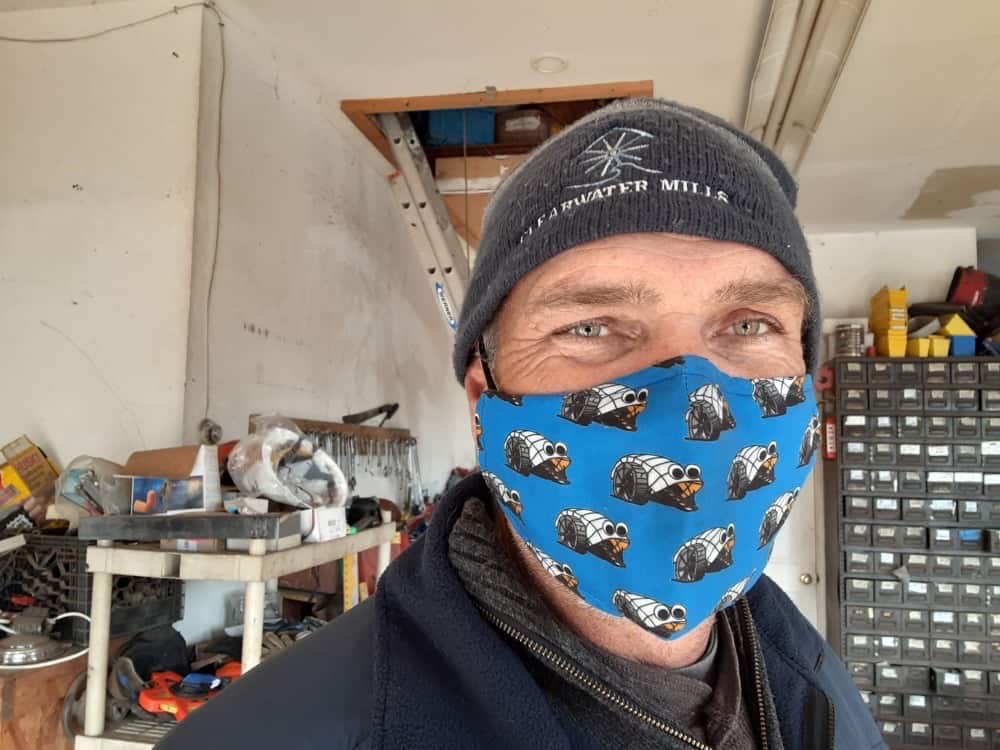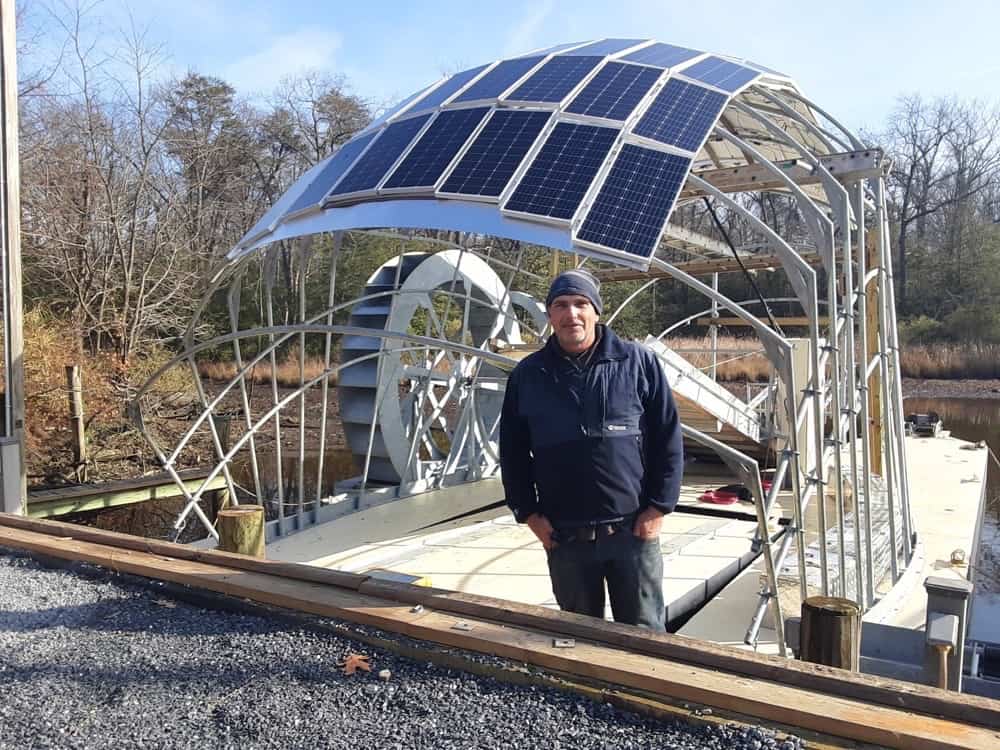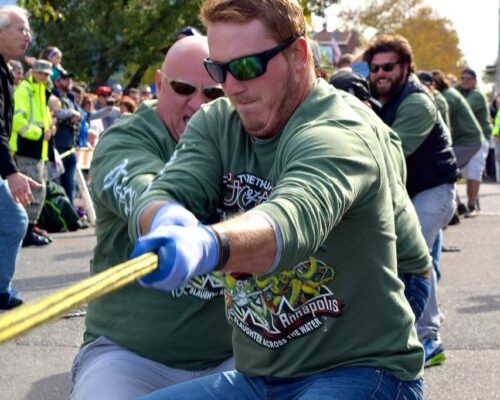Baltimore spins up another trash wheel
There is a new bundle of joy joining the “family” of trash wheels that clean up Baltimore’s waterways.
Still relatively new, the trash wheels were invented by John Kellett and constructed by his company, Clearwater Mills LLC, out of Pasadena, Md. Kellett first came up with the idea about 13 years ago when trying to address the trash floating around the Baltimore Harbor.
“I was constantly confronted with the fact that Baltimore has a beautiful harbor, but trash was a major problem and an impediment to people enjoying the harbor,” Kellett said.
Upon further investigation, Kellett realized the trash wasn’t coming from the harbor itself, but rather flowing in from tributaries after heavy rains. While the city would send boats out for trash collection, Kellett figured it would be more effective to stop the trash before it found its way into the harbor.
“I called the city and told them we really need to do better with the trash in the harbor. And, to their credit, they said, ‘We’re open to ideas,’” Kellett said.
Noting that trash flow was often at its worst when water levels were high, Kellett thought a good strategy might be to use the existing flow of water to power the trash removal. Kellett made a couple of models where he refined his idea with miniature water wheels powering tiny trash-collecting conveyor belts.
Kellett showed his model to the city, but because this type of device had never been built before, he had to seek funding elsewhere. The Abell Foundation offered to fund a working prototype and Kellett went to work constructing the world’s first trash wheel in 2008, with his business partner Daniel Chase. Upon completion, the two began testing their wheel at the Jones Falls outfall. The Jones Falls flows nearly 18 miles from North Baltimore to the Inner Harbor, picking up plenty of litter and runoff pollution as it goes.
“No one had really ever stopped the trash that’s coming down before and tried to pick it up. So, there were no real good estimates on how much trash was actually coming,” Kellett said.
Through testing, the machine made a substantial dent in the amount of trash dumping into the harbor. It was clear that while Kellett’s idea worked, the next wheel would need to be bigger, stronger, and faster to make a lasting impact on the quality of the harbor.
The Waterfront Partnership of Baltimore, a group of businesses, nonprofit organizations and stakeholders around the Baltimore Harbor, secured grants and donations to build a permanent one.
Mr. Trash Wheel was installed in May 2014 at the mouth of the Jones Falls. In December 2016, the Waterfront Partnership had Kellett construct another wheel for Harris Creek, in the Canton neighborhood, known as Professor Trash Wheel. Then, in June 2018, the Port of Baltimore hired Clearwater Mills to construct a Captain Trash Wheel for Masonville Cove, in the shadow of Interstate 895. Public suggestions and a vote will now determine the name of the newest and largest of the trash wheels, soon to be announced.
Over the past few years, the trash wheels have held up under heavy floods and rough conditions. Kellett explained that the rugged and simplistic design has allowed his fleet to go with very little maintenance. The prototype was attached to a plastic floating dock, but steel barges were used as the base of all the permanent wheels. Most of the wheel, conveyor, and canopy frame are made of galvanized steel for weather resistance, Kellett said.
The wheels themselves are not entirely low tech, however. The power of the river that turns the water wheel is supplemented by solar energy. The panels store energy in large battery boxes along the platform of the trash wheel. The batteries inside power water pumps to turn the wheel when the current itself isn’t strong enough.
While Kellet’s prototype had three panels and a small wind turbine, the new wheel has 72 solar panels powering its pumps. The highway overpasses that cross the area block the sun during much of the day, meaning the wheel needs to capitalize on the few hours of direct light it gets.
These days, Clearwater Mills employs four to six people, depending on their project load, and is internationally known. Kellett’s team currently has projects in development in Texas, California, and Panama. So far, more than 60 countries and dozens of states have contacted Clearwater Mills about trash wheel projects. “Our company hasn’t grown much from a personnel standpoint, but certainly our reach has grown,” Kellett said.
While his company may construct and maintain the trash wheels, Kellett takes little credit for the personalities that have been given to his creations. “They make it talk and see with the eyeballs, and we make it eat,” said Kellett.
The talking and seeing is handled through the Waterfront Partnership of Baltimore and the various, quirky social media accounts they run for the trash wheels. Adam Lindquist, Director of the Healthy Harbor Initiative at the Waterfront Partnership, stressed the importance of making environmental projects like the trash wheels something everyone can relate to.

“The Harbor is a great tourist attraction, people love to take photos with the Baltimore Harbor, but they weren’t really connecting to the harbor as a living, breathing ecosystem,” Lindquist said.
When it came time to make Kellett’s trash wheel more engaging to the public, the partnership consulted various creative firms for ideas. Eventually, a company called What Works edited an image of the trash wheel by giving it a pair of googly eyes and making it speak. The idea stuck and the machine was given the name “Mr. Trash Wheel,” and a public-facing personality soon followed.
Each of the subsequent trash wheels were given their own identities, complete with likes and dislikes. Baltimore’s response was overwhelmingly positive. When asked if children thought of Mr. Trash Wheel as a person, Lindquist laughed and said some adults even think of Baltimore’s trash wheels as people. “Mr. Trash Wheel is really beloved by the city of Baltimore. He’s like an unofficial mascot,” Lindquist said.
Tattoos, Halloween costumes, and birthday cakes, all in the likeness of Mr. Trash Wheel, have confirmed the city’s adoration of Kellett’s invention. Though in the long term, simply removing the trash may not be a permanent answer. “We don’t want to just pick up the trash from the Baltimore Harbor indefinitely,” Lindquist said. “So how can we use this device to help promote behavior change and policy change that will reduce the amount of trash we’re seeing in the Baltimore Harbor?”
The popularity of Mr. Trash Wheel and his cohorts has led to the formation of several environmental projects, including the “Order of the Wheel,” which asks pledges to complete a series of tasks to join a “secret” society of conservationists. Lobbying efforts made towards policy change have led to Maryland being the first state in the country to ban usage of polystyrene food containers.
Kellett feels a great deal of satisfaction in the ways Baltimore reacted to his invention. While he agrees that removal alone cannot become the ultimate solution to the harbor’s trash troubles, Kellett said he can still appreciate the work his machines have done to clear up the water and spread their message.
“Hopefully, sometime in the future, trash wheels won’t be needed,” Kellett said. “We’ll tackle the problem and there probably won’t be as much trash coming into the water to begin with.”




